Ok, lets get back to business…
Why the M8 might be the right rangefinder (for you)!
By Robert Chisholm
I am excited to be writing an article for Steve’s site! I have enjoyed watching the site develop and appreciate the genuineness of the site, with photographer-oriented articles, rather than pieces for pixel-peepers. Look, I’m a daily shooter, someone who takes photos because of the product AND the process. To me, photography represents a release, a break from my daily stress and worry and a means to connect with the world creatively. I intended (and started) to write an article for Steve about shooting the M9 with less expensive, “alternative” lenses (Voigtlander, Konica, Jupiter, etc), but that article keeps evolving with my lens collection, and is still much a work in progress. After joining flickr recently I began going through old photos on drives to add to my page. I am rediscovering many amazing photos I forgot I even took and many of them were taken with the M8. This has provided me with a wealth of material upon which to reflect. I now better appreciate what a fantastic camera the M8 was (and is)!
The M8 was my first love affair with the rangefinder. I came into photography at the early part of the digital SLR revolution, missing film altogether. I can not remember having a camera as a child – my parents were not “artistic” in that way – but I do remember appreciating visual art early in life. Unfortunately it was apparent from an early age that I can not draw or paint and being a creative person I needed an outlet to express myself visually. Through that desire came my love of photography. Now, while I never experienced film photography, my wife was a graphic designer by trade, and had worked with both film and digital (early photoshop) processing. From her photoshop instructions, and from reading all I could online about digital image processing, my photography and digital processing evolved hand in hand. In retrospect, I guess film was never for me. I only mention this because when I also stumbled onto rangefinders, the digital rangefinder was my only real option. And we all know that, right from the get go, the only player in digital rangefinders was and is Leica (with a somewhat more limited attempt from Epson).
Today I shoot and enjoy my M9. However, as the cost of the M9 is (much) more than most can afford, and as comparable image quality is available at a fraction of the price in dSLRs from Canon/Nikon/Sony, justifying an M9 might be difficult if not impossible. This fact brings up, right from the start, a very basic argument herein that needs to be discussed. It is the 800 pound gorilla in the room, the argument that stops many people from going Leica at all: The rangefinder is a manual focus camera and doesn’t do sports/macros/long lenses well, if at all. Single Lens Reflex cameras can do every focal length that rangefinders do, plus have snappy autofocus and can shoot anything. Who needs a rangefinder?
Yes, this is THE basic question. If the answer is not obvious to you, then go no further. The whole rangefinder “thing” is not going to work – and that’s OK. For everyone else, you know the answer: Some people “see” the world and photograph differently with a rangefinder.
Bear with me for a minute…
I enjoy trying “new” things. Since 2005, starting with the digital rebel XT, I have used cams from Canon (rebel xt, 5D, 5D2), Nikon (D300, D700, D3), Sony (a850). I also have owned the Leica M8 and now M9. Like most of you, I shoot and shoot and shoot, for enjoyment and as a passion. My subjects are my world, which means mostly family/people photos (boring to most, but priceless to me) and I am guessing that I have taken probably 150,000 photos. Or more. In the digital world, you can take (and toss) a lot of photos. I’m not trying to say I shoot more than someone else, and most of my photos from any given session are so similar that I keep one and recycle all the others. But as an avid user of several systems, I have a decent amount of experience on both the SLR and rangefinder platforms. I know the “on paper” pluses and minuses of both systems, and, on paper, slr cameras clearly have the advantage, given price to performance.
As I mentioned, I recently joined flickr to host images mostly for my family (the grandparents) to view and enjoy. While much of what I consider my best work will never see flickr (or the light of day) because it is more fashion or “fine art” oriented subject matter, what I discovered is that, out of everything that I have taken over the years, my best photos on flickr come from my rangefinder shooting. Because of the different cameras I’ve enjoyed over the years, the BULK of my work comes from SLR cameras. There might be ten times the amount pictures from my Canon/Nikon/Sony but the photos that I love (and that my unbiased wife really likes) come from my Leicas.
This brings us back to the start: Some people will and do see the world and photograph differently with a rangefinder than with other cameras. And this might be, as in my case, better (That premise also says that for others, it could be worse!). But if you, like me, do your best work with a rangefinder, then you’ll want one, no matter the cost!
So, what about the M8? The camera once championed but now forgotten with the arrival of the M9. Was it the flawed failure some say? A half-baked attempt at a digital rangefinder? Cropped sensor a handicap? 10 megapixels is too little? ISO limitations too much? Read the online forums and you will get all sorts of answers and arguments from fanboys and haters alike. But with the release of the M9, and as the price of the M8 has fallen to $2k or less, the M8 is a camera to take a hard look at if you need to shoot a digital rangefinder but can’t afford the M9.
Now, I’m going to save my discussion of “cheap” rangefinder lenses to the aforementioned article I am writing with the M9 in mind (if, after this piece Steve is still interested!). Let me skip right to article’s conclusion and give my not so humble opinion: While Leica glass may be the “gold standard” by which all rangefinder lenses are compared, there are plenty of quality lens options available on the new and used market to allow, for the price of one new Leica 50 Summicron lens, a person to completely outfit their rangefinder lens kit. Boom, there it is!
So, you can get a New-To-U (used) M8 for about $2k (or less) and a complete lens outfit for another $2k (or less) and you are all set. For a bit over half the price of the M9, you can have an M8 and lenses and be out taking and making great photos! The price of admission, my friends, is reason #1 that the M8 should be considered over the M9 as your way to enter rangefinder photography. Let’s look at a few other things.
The Crop Factor
The M8 has a 1.3x crop factor. That’s not too terrible. The mid-level Canon’s and Nikons and even the pro-level Canon sports cams have crops. The downside is that wide angle lenses are not so wide. And “apparent” depth of field is increased, so lenses appear to give you a slightly higher depth of field (we won’t discuss why this is, but it is mostly because of subject distance from camera which seems to change depth of field). What about the benefits? The most obvious benefit is that lenses known to be “not so good” due to softness at the field edges are now usable. As you are using the center of the lens, the softer edges do no impact the image as much or at all, depending on the lens. This makes older lenses that might be too soft on the full framed M9 now viable options. So, your pool possible lens choices is actually larger with the M8 than what you would consider with the M9. Additionally, the 50mm lens, which is a decent portrait lens on the M9, becomes a fantastic portrait focal length on the M8. I actually miss this with the M9!
Ten megapixels.
Is ten megapixels enough? For what? For many users and for most applications, ten megapixels is plenty. For people with size issues and number envy, ten might seem far too little. The major camera manufacturers have been using the bigger-is-better argument to sell point and shoots and DSLRs to the masses now for years. And this argument works! People believe they need the biggest, the “most” of whatever they can get for the money. This is a psychological argument that is in no way limited to sensor size: We see it every day in commercials for fast food, homes, automobiles, etc. No matter the product, people psychologically link value to perceived measurements. The bigger objective value retailers place on a given aspect of a certain product, the more we as consumers seem to attach a higher subjective value on that product as well. Once you impose a real life limitation to this argument, such as how big do you need to print, then this argument comes to a screeching halt at a certain point. While 6 megapixels was a great improvement from 3 megapixels, once you reach ten megapixels of super sharp data (given the lack of the blurring anti-aliasing filter) and you can print 16×24 inches very, very nicely, how much more do you really need? I rarely print over 8×10. Sometimes 11×14 or 11×17, I guess. Where is your hard limit?
I suspect that most people do not print much bigger than 16×24 on a regular basis. If that is your portion size, then the bigger-is-better megapixel argument has hit its limit with you: You don’t need to super size this one!
ISO Limitations
I will be the first to say it: I did not like the inherent ISO capabilities of the M8 and greatly appreciate the 1 to 1.5 stop advantage of the M9. This makes a real difference to me. I live in the cloudy Northwest, where it rains and is dark most of the year. Summer is short and light is scarce. Now, if I lived in sunny Florida where it stays lighter and brighter for most of the year and that light remains late into the day, I might not noticed the ISO limitations of the M8 at all. ISO is really where the Leica’s fall behind their competitors. For me my hard limit is hit with the M9: I can shoot what I want when I want, and I really would not shoot much more. For a guy who shoots concerts or in low light venues, the M9 might not reach their hard limit. The Canon or Nikon low light camera du jour might be the only way to go, if you have to get “that shot” in the dark!
That said, the M8 (and M9) has very grain-like noise. Not the color-smudgy-blurry noise I get with my Canon 5D2 – Rather you get a really a nice, grain-like pattern that, when viewed in prints, is not unattractive and reminds me of “the look of film.” What can I say, I like it! Sometimes I would purposefully use ISO 640 on the M8 to get that film-like noise.
So, if the crop factor, the megapixel count and the ISO capabilities of the camera do not impact your shooting, then the M8 is a fantastic camera for you! An inexpensive used but clean M8 might be the perfect way to enter digital rangefinder photography.
There are definitely aspects of the M9 that I appreciate, subtle but very real improvements that make the M9 the “right” choice, for me. No matter what “the experts” pontificate about online, I know, from shooting the camera and working the images, the M9 files have less noise, more dynamic range (which helps me when processing) and definitely have a different in-camera image engine that make the overall look of the files more rich and colorful. The M9 is what I had hoped the M8 would be. But looking back at the photos that I now cherish, the M8, for all its real or imagined shortcomings, gave me more “keepers” than all my dslr’s combined. Boy, that’s a terrible camera!
Rob Chisholm is a photo-enthusiast living in the Pacific Northwest.
More of his work can be seen on his flickr site at:
http://www.flickr.com/photos/feros-ferio/
[ad#Adsense Blog Sq Embed Image]

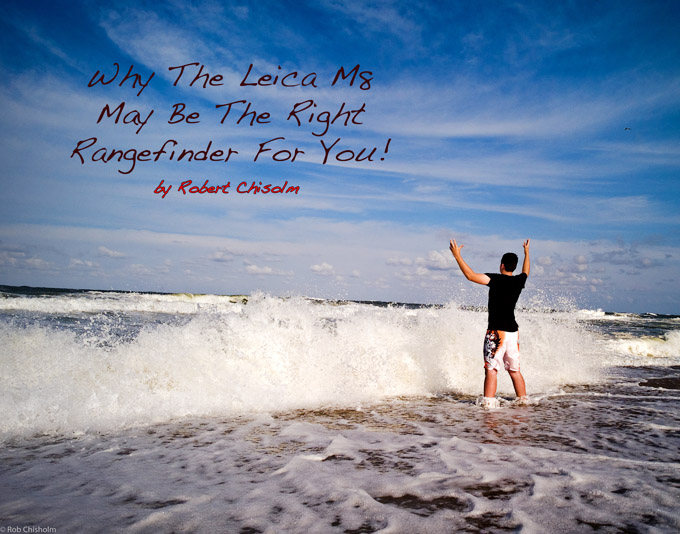

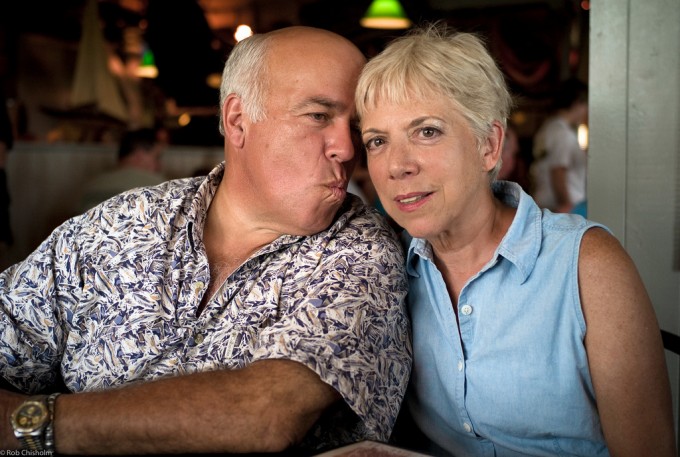
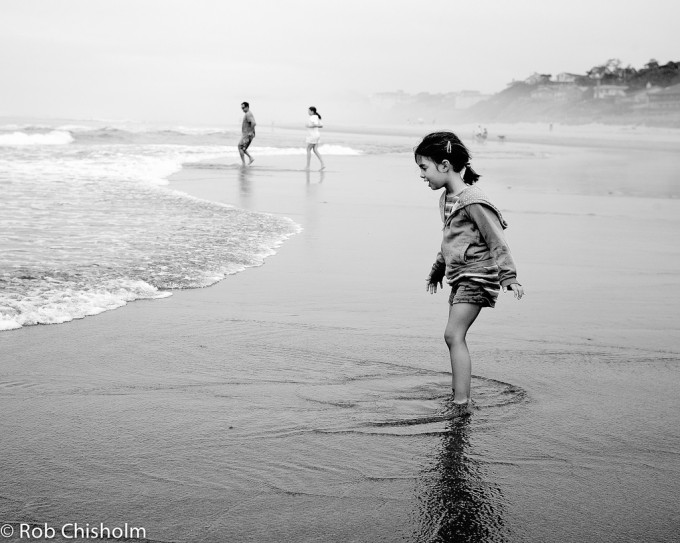
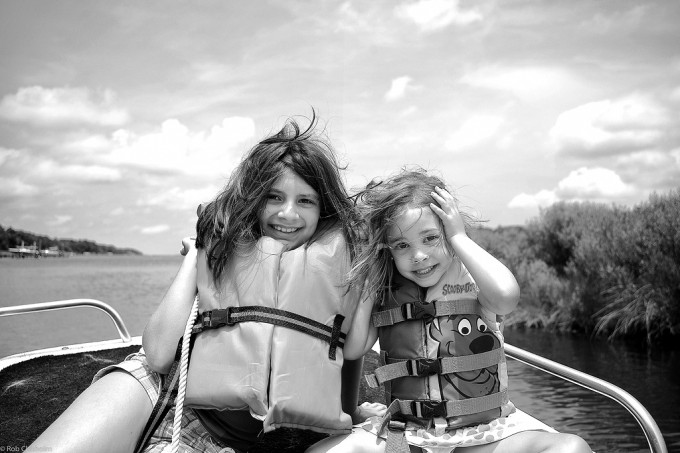
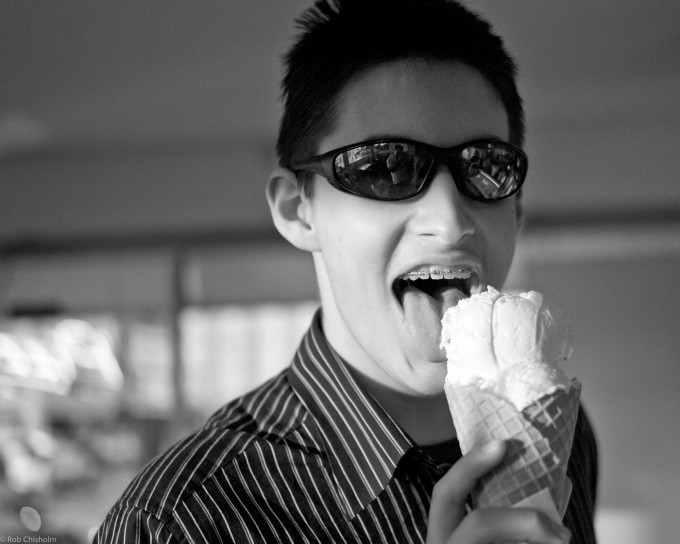

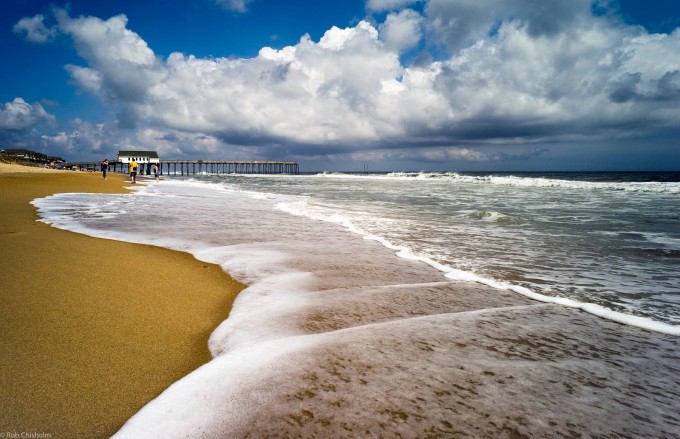

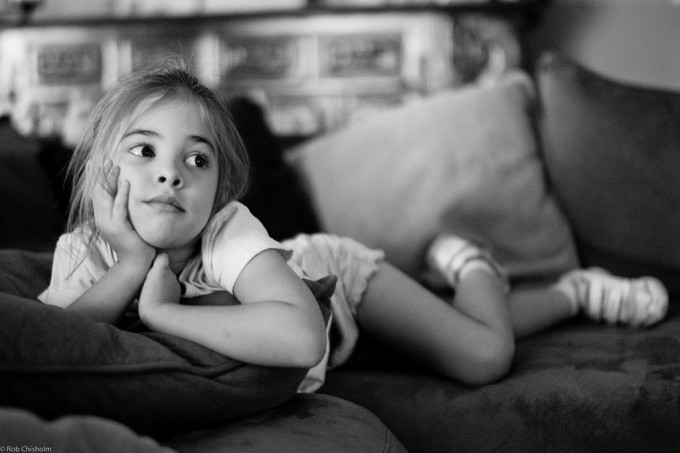
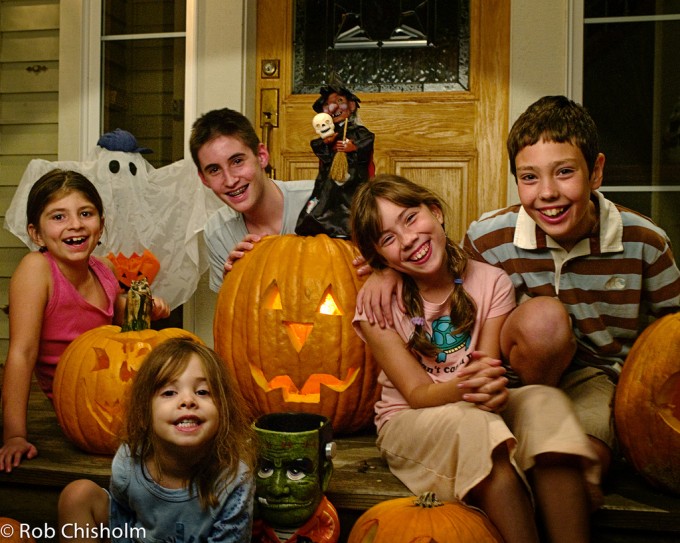

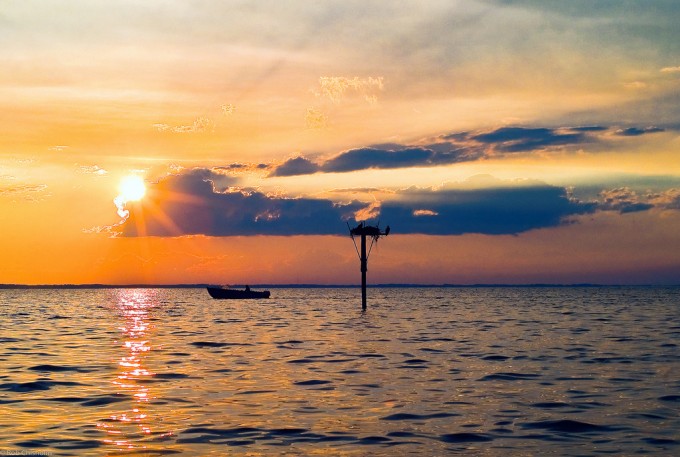
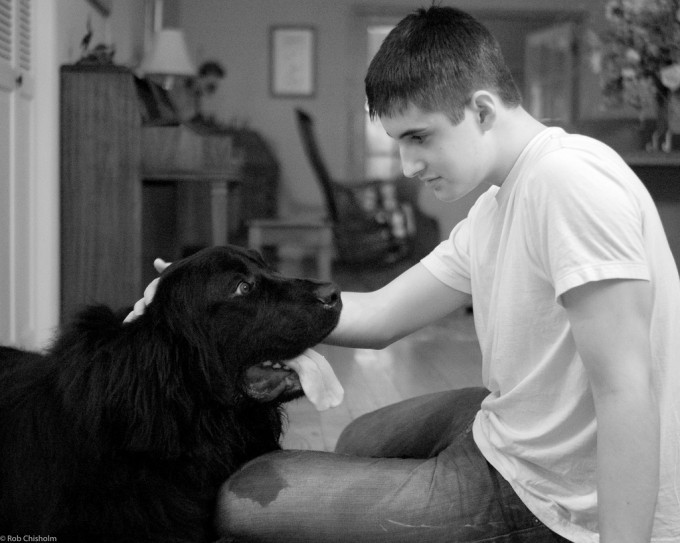
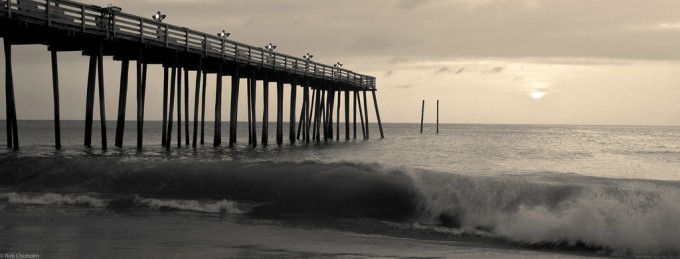

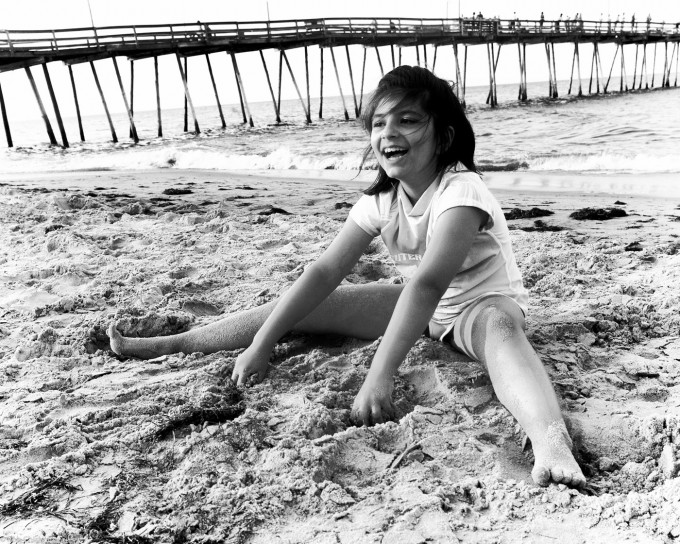
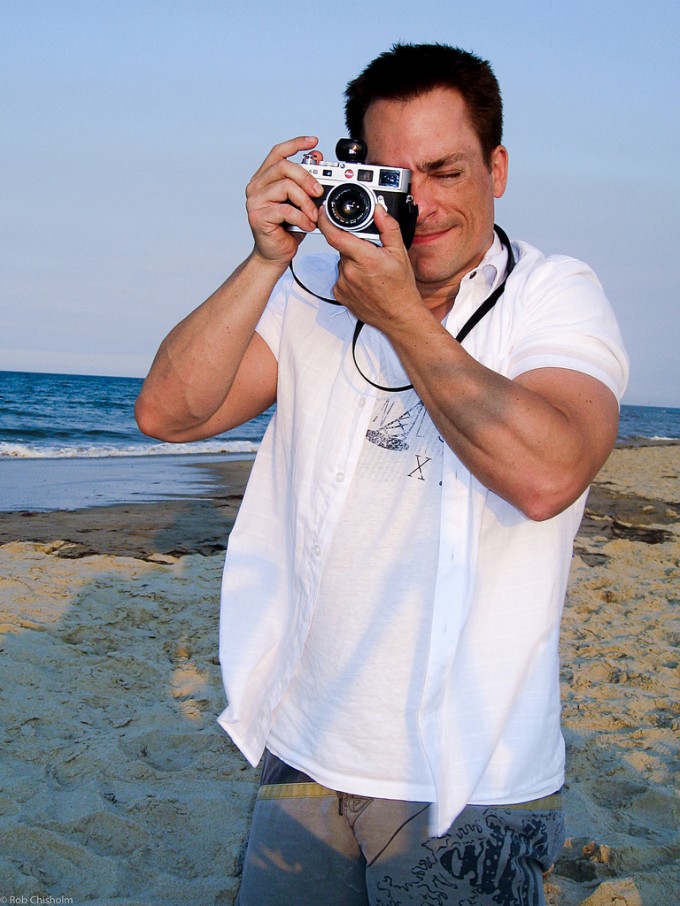
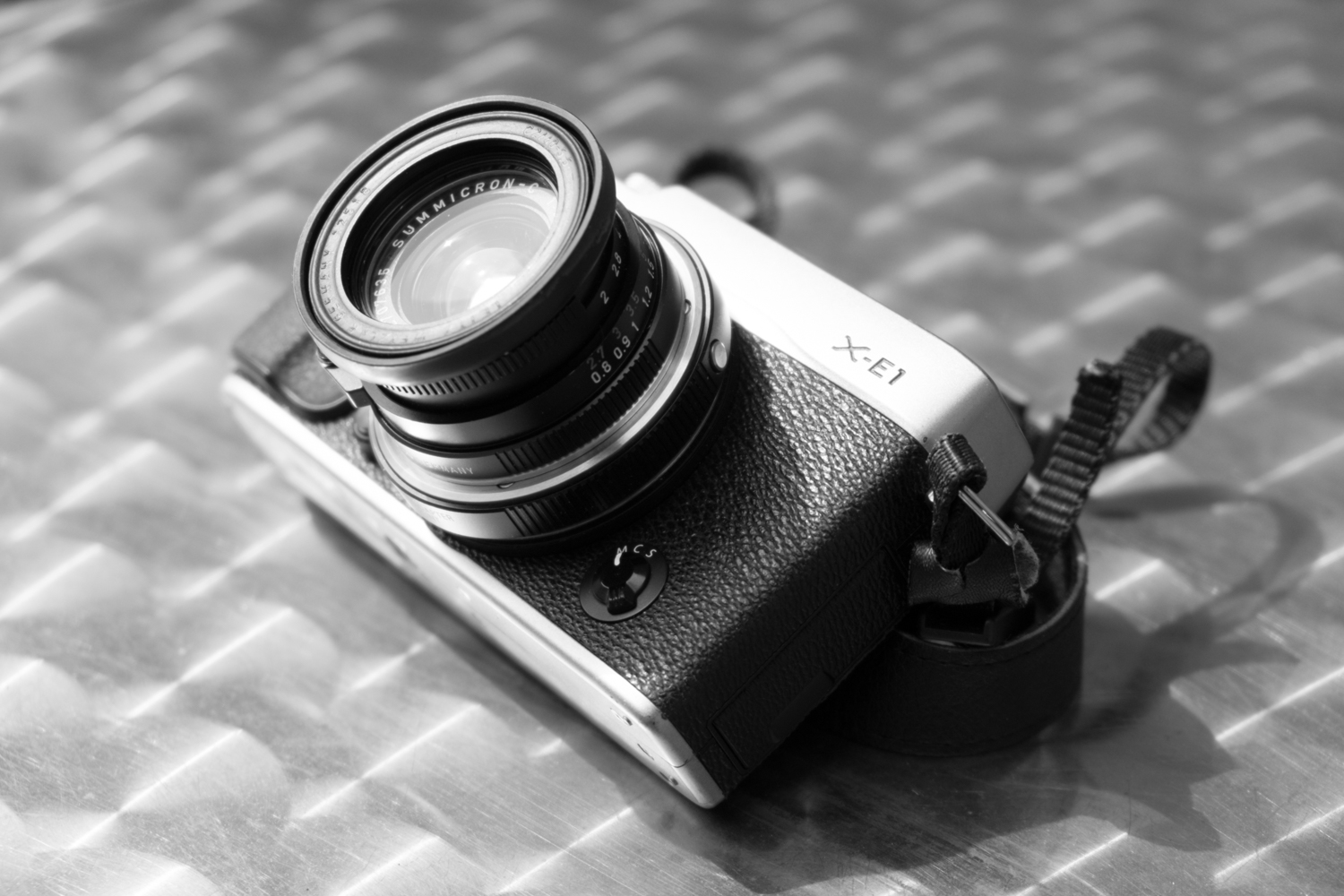


Hi Steeve! What would you prefer Leica M8 with summicron 35/2 or Sony A7 with Loxia 35/2 for everyday shooting? Thanks in advance!
Id take the A7s A&II or A7RII with the Loxia over the M8. Why? You gain massive low light abilities, you gain better IQ with the full frame sensor, you get a real time solid EVF that will never go out of alignment, you get a newer sensor tech, you get, in the case of the A7II and A7RII a super solid body with 5 Aixs IS inside, and amazing video capabilities. I would not buy an M8 today due to the age of them. Many sensors have gone bad, LCD’s have gone bad and its slow, only good up to ISO 640 MAX (not 6400, 640) and has a 1.3 crop sensor, not fall frame.
Steve, thanks you wery much.
Another year later. In 2013, and I love the M8. It is still a great camera, and still amazes me with the sharp crisp files at pixel level, if you get the technique right.
Had it for a year and half. I got it to have a digital to mount the 50 summicron on, which has been sitting around on the M2 unused since 2003 (shame I know, film is still cool).
Since the 50 became a 66mm FOV, a 28 Summicron was also bought. Wow, what a fantastic combo. Razor sharp.
Doing home improvements a VC 15 /4.5 was picked up for documenting interiors. Another fabulous lens. especially compact in the old LTM version. No distortion, great on a tripod.
A workmate who no longer uses his CLE gifted me an old Hectar 135/4.5 Not great, but I like using it to take photos of the ground when flying somewhere.
My Dad gave me a Jupiter-12 (35 / 2.8) and LTM Canon 28/2.8 he picked up with a Leica III. The Jupiter reminded me why I bought the 50 Summicron originally. I love the 50mm FOV. Otherwise the Jupiter is too slow, doesn’t focus near enough, and has a weird aperture set up. little distrortion, not great colors.
The Canon 28 had no chance. The 28 summicron is the best lens ever at this focal length. The Canon looks cool, but has a clickless aperture with no friction, so it always gets reset when you focus. The Focus lever through is way too long. It sits on the M2 looking pretty.
Obviously the M8 sensor has pretty lame high ISO. I wanted one faster lens, and it should be a 35 to give me the 50 FOV. The CV 35/1.2 is soo tempting. It looks perfect, except for the bulk. I bid on a few CV 35/1.2 and then on pre-ASPH summiluxes, but my heart wasn’t in it, as the 1m closest focus of the summilux is something I really find limiting on the Jupiter.
Last weekend I picked up a used Nokton 35/1.4, and feel I have everyhing I need for a long time. I knew about the distortion, focus shift and funky Bokeh, and so it has really impressed me with how good it actually is.
My M2 was the doggiest one I could buy, and my M8 is not being babied either. I don’t bother with a case, it lives in my crumpler laptop bag. The veiwfinder window coating is a bit scratched, the body has picked up a few dings, the shutter has shot twice as many clicks in the last 18 months than in the first 5 years of it’s life. This is what it was made for.
UV/IR filters are easily available on ebay. I have three aftermarket batteries.
The M8 is a great camera. It will always be a great camera.
Thanks for the forum Steve.
A great article and the photographs speak for themselves. The quality of images possible with Leica M’s caused me recently to start my own digital RF journey, for less than $2000! I snagged a pretty fresh silver M8 for Australian$1500 here locally, and a VL 35/1.4 Nokton for less than A$500 delivered. The M8 also came with two batteries.
I have a large investment in a Canon full-frame DLSR including many alt lenses, so an M9 was out of the question. I wanted to try a digital RF and a love of shooting world championship motorcycle racing at least twice a year means that I am sticking with my DLSR in any case. I already find I enjoy using MF alt lenses on my DSLR or Sony5N; acquiring an M8 extends that considered approach further.
On the strength of your Jupiter article I have just ordered a Jupiter-8 and will probably buy a Jupiter-3 at some future date.
In closing I should add that at least one other photographer acquaintance also intends to embark into digital RF-land with an M8, not an M9, for all the same reasons.
Great article , and I concur, the M8 is still a viable and great Digital RF, and a great Camera all round 🙂
Well it’s 2012 now and Leica M8 prices in the UK are at about £1500 for a clean used body, Ebay deals are lower still at £1100-£1200 and upwards. My saving mission is going slowly but Determination is my middle name.
If the M8 can output 16″x24″ high quality colour and black+white prints then i can live with any ISO, UV, issues. From researching the M8 i think it wise to pay that extra bit more and get a M8.2 for its improved shutter and screen, the shutter speed loss 4000th top speed is also not a problem for my shooting.
It will be interesting to see what happens on May 10th and if that Leica release affects the M8 price even more.
Will the M9’s retail price be lowered?, will the M9 be discontinued?
I miss my M4-P so much and can’t wait to get its digital brother the M8- i’m hopelessly besotted.
Massive thanks to Steve and all contributors here- Totally brilliant and HONEST site, 10/10 gold star.
I use an M8 and time after time I am blown away by it’s results.
Sure, sometimes you have to think a little more about using the high ISO but most of the time you can get a good usable capture.
The M8 is a great, great camera and one should never think twice in choosing it if you don’t have the money kicking around for the M9.
Rob, nice write up. I thought there was a reason I kept my M8.
I too look forward to your lens article. I’ve been waiting for a 50 lux since February.
I have to say that, if those girls are your daughters, the youngest is amazing.
ok, lets try that again (the link from the mobile Flickr does not work).
http://www.flickr.com/photos/37556068@N06/5026396700/sizes/l/in/photostream/
That’s some heavy abuse there Stephen; I don’t think mr Leica will let you have a “titanium” M9 🙂
@Robert
Yikes! That is a pretty scary review and I think he was particularly unlucky with the M8s he had. He even mentioned he had problems with his M7. Fortunately I have had no issues with my M7 and I don’t treat it with kid gloves (ok, nothing like this guy but mine takes a few knocks). Here is a picture of me with my M7 last weekend (taken by a friend with his M6).
http://m.flickr.com/#/photos/37556068@N06/5026396700/sizes/l/
I thought after the very positive article – that i really enjoyed reading – about the M8 it is only fair to post the other article as well. Specially when people (like myself) feel tempted to rush out and buy a used M8 for still a lot of money.
One question to the writer: to which extend have the pictures in this article been post processed? Have You used Raw files or JPegs?
Hi, and thanks for the nice review… Cannot wait for the lens review….
Nevertheless i want to post the link to another – different – review here, which should also be read and considered by people who think about buying a M8…
http://web.mac.com/kamberm/Leica_M8_Field_Test,_Iraq/Page_1.html
Has been posted here before. Probably not representative. “Heavy” M8 users might testify it’s a very dependable camera. Anyone?
Well no (it’s not dependable – at least mine isn’t) … I made a comment (no 17 earlier) about only buying an M8.2 converted shutter on the M8. (or making really sure that the M8 you have has the latest firmware and that the shutter fault problem – which is deadly – the camera won’t work until the factory fixes it – is really fixed). Having read the Iraq review again (which I read before I bought the M8) I have to say that it is most interesting (in fact totally fascinating!) and represents real live field testing that none of us will ever do. I’m a heavy, clumsy user of Leica’s on the paved streets of Warsaw (Poland). My M8 suffered 1/ shutter failure (at least twice), yellow tinge (most lenses), buffer full (most time I shoot anything – it’s infuriating). My X1 which I am absolutely in love with has suffered 1/ battery compartment failure (maybe I damaged it – maybe not – it’s feeble) 2/ flash doesn’t work within two months. No doubt Leica will make a fantastic job of repairing it quickly. Like everyone else here and the Iraq reviewer it won’t change my (very positive) view of Leica and I will no doubt buy more (mostly old) lenses, more camera’s and eventually an M9 to add to the CL, M5, M8 and X1…. I think it’s almost a religion or a way of life and not a camera and certainly is a lifelong passion (I started this passion on a Leica 111f red dial 40 years ago). No doubt Steve will identify with that. On my admittedly very, very small sample Leica should though pay more attention to build quality in the future. Service quality is clearly 110%.
What about Portra 160NC pushed one stop, straight scan? From the side of the catwalk.
http://www.flickr.com/photos/37556068@N06/5027269592/sizes/l/
Friggin’ sweet B-Man!! Pushing worked well there, as the contrast is killer. Awesome shot!! Who the heck needs digital when you got Portra??
Okay Max, thanks for the information about the Velvia 50/100 (used it even in the evening which give some odd green lamp-light which I got used to like)…I only used some half soft blue filter at my Hassy SWC(tripod and all that timestealing stuff) but went over to just a half-greyish one for the sky (longing for using that little hassy-way of a compact kamera…longing, while talking about it, also for trying it on moving street shoots (was it you or Robert that told, one just could gues the aperture after some time (and perhaps looking at the inclosed leaflet)…that could be cool to jump over the light meetering)…just have a parcel of 3 years old provia 400 120 in the frige….
Thorkil,
It gets tough to use 50 hand held, especially if you go into late day shots. For those, I would certainly use at least an 81B warming filter. During the day, I leave an 81A on all the time.
As far as exposure, I would never want to guess with transparencies. You can go with sunny 16 rule if you really have to, but with such limited range with slides, you take a chance. Careful metering is always better with those, in my view. If you want more freedom from that, you can always shoot FujiPro 400H or 160S, or Portra, and you still have great colors, little grain and much more latitude in terms of exposure.
Max. Thank you! I checked the fridge, 5 x fuji Provia 400(like the dia-film most..), should have been processed before sep. 2008, but I will take the chance (at least to save some money..).
Allright, I will then bring the M6 with me to make shure of the light.
Have you tryed some funny thing?, to expose a Velvia at 400(it was by accident), then get it processed by lab at 3 steps down, some spooky bluish color came along
Thorkil..if it was refrigerated, it should be fine. Never pushed transparencies. Yes, it can get pretty funky, as contrast and color shifts may get out of control.
Max, I should have known you had put that much thought into it! Thanks for the tip.
@ Max, love that photograph. Particularly like how you have exposed foreground which leads me into the sunset. Often Sunsets are exposed beyond and under exposed in the foreground almost cutting it off from the viewer but yours does the opposite and invites me closer. Great job!
Yes, Mr B…I only really wanted that patch to the right to be illuminated and since some of the scene was already dark, I let the grad do the job and bring down values so I wouldn’t have a blown sky, which means the trees went darker as well…but it works. The only way to pull off a shot like this with “correct” values, would be HDR…but then it would look like a cartoon 🙂
🙂 Max, but perhaps a spotlight at the path to lighten this up? (captureNX2 or Viveza2(havn’t got it), sorry forgot I’m allmost against processing)…..and I agree, on hating HDR more and more….
to all you others…..Click at Max’ navn and take a look at some gorgeous pictures…
Thanks, Thorkil. Oh, sure..fill flash can also do wonders, if used judiciously, but I’m not big on flash photography either. If I was working digital, Viveza can do a decent job but one would have to spend some time on it. I don’t have a lot of time for extensive post processing so I rather get the picture I want by working with what I have and there is more satisfaction when it comes back as you’ve envisioned it when you shot it. Different strokes for different folks, as always…that’s just me.
Max..neither am I, using flash, never. Agree on PP. Perhaps when there were no one who did it, we would get fewer pictures on the net, but perhaps the rest of it would be more interesting to watch…
How about a straight up scan of Velvia 100 (Nikon F6, + 3 stop Galen Rowell GND + 85B filters.
http://www.flickr.com/photos/leicaman/5024666062/lightbox/
Velvia has its haters but it’s still my fav for dramatic landscapes.
delicious image max!!.. even though you may have made it warmer than necessary? Velvia is probably normally a little green in it? and velvia 100 is probably a little stronger in color than the Velvia 50? (and may not need processing). otherwise it’s my favorite film along with provia 400
Thanks, Thorkil! Actually it’s the other way around…100 is a bit more balanced than 50, which can be a little outlandish sometimes. I like to go with the 85B warming filter for very late afternoon shots at times, as it really warms things further and want to cut any greenish/blueish cast.
Thanks Thorkil. Yes, the Coolscan 5000 ED. I love Velvia. That and Ektachrome are amazing. Here is a scan of Velvia 50.
http://www.flickr.com/photos/37556068@N06/4271885635/sizes/l/in/set-72157623204478204/
beautifull picture Stephen!, soft, nice and warm colours…! (I assume it must be your daghter cause she reminds of your beatifull wife on the previous picture..I assume.. (you could see the love in the eyes at her glance at your linse…) ..sorry for those remarks..)
ps..scanned with Nikon coolscan? and then one with an Velvia please..(the sharpest of all films..perhaps?)
Really, really nice pictures, Stephen, sharp, with honest and deep colors and lovely contrast and glow..!..like them!
finally got to play with one of these! Its so nice!
Played with an M8.2 for about half an hour today (put my lux 50 on it) and it felt really nice! Then I came home and scanned some Portra 160NC from my M7 and was at peace again 🙂
Max – how about a straight scan without any PP. Funny how there is so much talk about dynamic range when frankly, often a photo uses shadow and dynamic range does not add much.
http://www.flickr.com/photos/37556068@N06/5023249740/sizes/l/
Forgot the details : M7, 50 lux, Portra 160NC
Looks great to me, Stephen. Portra rules! Never needs any adjustments of any sort. 400NC (now discontinued but new one supposedly improved) is just as good.
How about some M7 film?
Leica M7, Summilux 50mm (asph) with Kodak Ektar 100
http://www.flickr.com/photos/37556068@N06/5022474585/sizes/l/
Sorry correction, this was also Portra NC.
To be honest of all the leica shots I scoot through every day, the majority if times it’s the M8 shots that stop me. I don’t know what it is but for some reason they always look sharper and more cinematic than stuff I see from the M9. Maybe it’s the crop factor using the centre part of the lens that produces the sharpness and look I like, I am a big lover if Bokeh and shallow dof, but the M9 too creamy for my personal taste, it’s over done and the shots look too oof, Obviously the resolution of the M9 and iso capabilities kick the M8’s ass, but I notice it when say looking at a 35mm summilux shot on m8 compared to M9, to me the M8 ones always look….well more cinematic and 3D. Just my 2 cents worth.
Thats beause the cropfactor gives you a stop more depth of field.
@Bard – very nice photos!
@Harald – speaking of Apple. Just saw this http://bits.blogs.nytimes.com/2010/09/24/apple-goes-after-the-camera-market-too/
Looks interesting.
For everybody who feels a little religious about how to shoot with a Leica, here’s a new high tech product you’ll like … 🙂
http://www.youtube.com/watch?v=YhcPX1wVp38
Harald, I can also invite you to http://www.weeklyshot.org
We can fight it off over there 🙂 ..in a loving, friendly way, obviously.
Robert…REALLY enjoyed reading this article!! Well written, and informative!! I also enjoyed reading the comments others have written.
@Stephen B…interesting take. I would really like to explore what you are saying in more depth. I often wonder why the “Leica Shooter” (whatever that may be) gets so annoyed with Photoshop, HDR, and other processed images….especially when the “Leica Shooter” often converts their images to black n white which is far from the “natural look”. The photographer greats in the past spent countless hours in the darkroom perfecting their prints often “creating something that was not there naturally”….today, that same darkroom has moved to the computer.
Scotty,
That is true to some extent but not 100% correct. The greats of the past did not extract anything from a negative that wasn’t there to begin with. They envisioned what they wanted BEFORE they took the shot and then they developed according to their vision and dodged, burned, cropped, to achieve the final print. Much of what goes on with Photoshop goes WAY beyond what a film shooter can do in a darkroom and that is maybe what Stephen is referring to. Most it is over-manipuIated garbage because it is simply easier to take a thoughtless shot and then try to make it look special with digital gimmicks (flame cape ON!). I would suggest for everyone to take a look at the work of Ralph Gibson. Leica, Tri-X, Rodinal. No misteries there. http://www.ralphgibson.com/
In regards to black & white conversions, anyone semi-serious about photography should first get out there with a few rolls of Tri-X, learn how to master that film with a one or two developers and then see what it’s about. I can guarantee that no black & white digital conversion will ever look as good, and real.
Best,
Max
Yada, yada, yada.
You are a romantic my friend. There is pretty much nothing possible now that wasn’t possible before. There are only two differences. A.) Before a photographer mostly worked with a specialist (person in darkroom) when it came to reproduction – unless of course s/he was not just a good photographer but ALSO a skilled master in the darkroom (two different pair of shoes!). Now it’s the computer everybody works with, by themselves or with a post specialist.
B.) Things go a lot faster than they used to be.
Although I shoot exclusively with Leica, I’m probably not a Leica shooter by your standards. The thing is when I shoot I pretty much work to your high standards. Only when it comes to post I’m not as lazy in making the most out of my work.
Sure, nothing wrong with going au naturel but don’t think for a minute that’s what everybody else (famous or not) is doing. Just because you can’t tell doesn’t mean it hasn’t been done.
Last word. If a photo is crap to begin with it doesn’t matter the amount of post work one puts in, it won’t become a better photo magically. It will only be better looking crap.
I love you, Harald! 🙂
So, you say that dodging/burning in the darkroom with elaborate masks is just as easy than doing it in Photoshop? And, yes, crap is crap, no matter how we turn it 🙂 ..but it is still a lot easier to manipulate crap in Photoshop than it is worth spending days in the darkroom.
Are you coming to Steve’s bash next month? We’d have a ball us crazy Europeans throwing shit at each other 🙂
Max … How do you get from (quoting me) “also a skilled master in the darkroom” to (quoting you) “just as easy than doing it in Photoshop”??????
Btw, things certainly go faster in Photoshop but it takes quite some time to actually learn the darn program. I mean really learn it, just not the basics.
For instance, I rarely use the dodge and burn tools to dodge and burn.
Elaborate masks? Dude! Learn to use your hands/fingers! Or make one print and cut out what needs some extra attention.
No, unfortunately not. Can’t travel currently.
Wouldn’t wanna throw shit, though. How about you throw computer/software (Apple please) at me and I’ll throw all kinds of photo chemicals at you.
😀
Thanks, Harald..don’t have any extra Apple computers to throw at you but do have plenty of photo chemicals as well though 🙂
BTW..I don’t even use Photoshop so I couldn’t even discuss how to use it. For the very few things I do digitally, Lightroom is way plenty for me.
The M8 was my way in to rangefinder photography. After climbing the Canon-latter for a few years, i sold my (back then) new 5d2 and L lenses and got the M8. Because of my studies i had to part with the M8 so now i shoot a Voigtlander Bessa R2a until i can save up to get the M7. The digital race is just not my cup of tea anymore, and i much prefer the look of (good) film. Maybe i’ll pick up an M9 if any M10 will appear to force the price down.. My way with 35mm, and preferably also, medium format film, is still with a rangefinder though.
I honestly believer the big diference is the Leica user ( customer ) not the camera !! somebody should write about this !! I will like to know what lenses i can use on a Lumix Gf1 this is my currente camera today an i will like to start using Leica lenses or Voigtlander lenses that one day i can use on a Leica.
Greg
Just to add my two cents worth. Post processing and also lighting (standing lights/stobes etc) are really there to create something that is not there naturally. For example, someone wants you to take a picture of them in a dull room with not much good natural light, what do you do? Well, you have three options: Option 1. You set up some off camera flashes/strobes/speed lights (whatever, aka artificial light) and snap the shot. Result looks pretty good if done right. Option 2. You shoot the shot with no flash in raw format and then dodge and burn the hell out of it in photoshop/lightroom etc to try and make your subject stand out a bit. Result often looks pretty poor (the classic over processed look). Option 3 (the Leica option). You don’t take the photo and try and go somewhere else where it the natural light is better.
I would suggest that Leica shooters more often than not, take the 3rd option in a situation like this. There are a lot of situations out there that are not photo moments and actually are best left well alone. Leica shooters are keen to capture reality. This is why you almost never see a Leica shooter with a flash and why they get annoyed when they see over processing. What do they have against post processing? Lets face it, the better the natural light and exposure at the time the photograph is taken, the less post processing is necessary. If a Leica shooter finds himself or herself spending ages in front of the computer processing a photograph, in almost every case, it was a bad photograph. Sure, this takes patience and skill (and often frustration) but that is the Leica way.
The result I would submit is that photos taken by Leica shooters tend to have different look largely because they are taken when the moment is right (the decisive moment?). Without recourse to off camera flash and heavy post processing a photographer is forced to be more selective, more patient and more skilled. I think that is why most Leica shooters don’t use a flash and prefer very little or no post processing and why their pictures look different to those who, when the elements don’t align, reach for the flash and the computer.
I should add though that off camera flash photography can be amazing for fashion and advertising but there it is not being held up to a reflection of reality. I think Leica shooters prefer a more natural look. One is not better than the other but they are not the same.
Hey John,
Looked through the three sites you mentioned and I see three main differences in the DSLR shots and typical Leica shots. Shooting style does play a part in the type of image created, but to start PIXstenz first shots of the swimmer and the girl in the factory are all done with strobes. Controlled flash light is the main factor in these pics. The shots could be made with a pocket camera with these lighting set ups.
On the other two sites, the dramatic landscapes are made by a mixture of post processing (some are HDR others are just regular adjustments) and the use of split neutral density filters. With a x4 stop split filter it is possible to make those really dramatic skies.
DSLRs lend themselves better to graduated filters because you can look through the lens and adjust the darkened upper portion of the filter to cover everything above the horizon. This require a few test shots on an M8/9 to get it just right.
So if you like images like the ones you have sent in those sights, I would recommend buying (2) flashes which will allow you to mimic some of those lighting conditions and a split graduated filter. Cokin filter system is good and not too expensive. Post some pictures of your results.
Great article and photos with the M8 Rob. I tried the M8 for a few months before the release of M9. Have to say I don’t like the handling, the noise both in terms of shutter sound and high iso… Body is diff and thicker than the M6 which I got used to… It just doesn’t feel very ‘Leica’ when I use my M6 as a standard. I sold it in 5 months and lose $1k… With that experience I try to stay away from digital leica although I am tempted by the M9 from time to time :-p
HCB would turn in his grave…
I’m sure he’s doing just that right now…
@Peter
I think this is a good move. Am seriously thinking of adding one to my M7 so I can have two focal lengths. My 50 lux would make a superb portrait lens on the M8 or I keep my 50 lux on my M7 and put my 28mm VC ultron on the M8 for a nice 35 (ish) normal/wide. That gives me the 35 and 50 I am looking for plus a digital and Film M dream combo 🙂 Life is too fast to change lenses. Need two bodies!
@Stephen B: and I thought you were the one camera, one lens, man… Nothing’s sacred anymore.
Well Robert, you’ve gone and done it now. I’ve been thinking M8 for a while now and your great photos and article have sold it once and for all. One question I have for Steve’s posse is now that quite a few M8’s are available, which of the early product codes should I keep clear of as I understand that the first batch had a sensor error. Thanks Robert I really enjoyed your article as I do most everything on this great site.
see my note no. 17 about only buying an M8.2 adapted shutter on the M8. I will write another note about this point shortly. In essence I found my (new – g’teed but Leica demo M8) very unreliable. Leica eventually changed the shutter to an M8.2 version after the third attempt. I did find their customer service very very helpful though. They did everything they could to fix the problem.
By sensor error do you mean they all need an IV filter (shoots incorrect colours without)? I think all M8’s need filters – perhaps someone can reply. I thought only the M9 fixed that problem in the sensor.
Great article! I am reading it on my phone and am stunned at how amazing the pictures look. Very very cool images.
I think this is a more honest article than most of the ‘Leica Love’ articles, as it does state that a rangefinder is not good at a whole load of things, and for a lot less money, you could get a much better, and less flawed camera, but….
It’s OK to *want* something, and not need it, nobody needs an M8 or an M9, a wildlife photographer may *need* a huge telephoto, but nobody *needs* the latest 35mm Summi-whatever from Leica, the old one,a CV or a Zeiss is just as good for anything other than pixel peeping.
I’ll admit it, I *want* an M8, I could name 10 DSLRs that are much better, and cheaper, but I’ll enjoy using the M8 more, but I’m not going to kid myself that I need it.
This has nothing to do with your nice article Rob.
But gosh Steve… yet another Leica clapping show??…. :-/
I must pitch in with the usual story: I came into digital rangefinder photography through the M9, since it meant there were plenty of affordable M8s available. One Zeiss lens to go with it and I’ve been shooting for almost a year soon with that kit. All the great points about rangefinders are true. My only major complaint is that I don’t like the M8 electronics, the camera seems to have moods and it’s not a very sure performer, sometimes eating up it’s battery by itself or sometimes jamming.
But I just came back from shooting some long exposure shots by the seashore with a light tripod and the M8. No light anywhere, except the full moon, and still I could see the bright framelines as perfectly as in clear daylight. Just by shooting with it I’m happy as a clam, the pictures come second.
Great article Rob, but perhaps someone could help – I mean…I just don’t get it.
I’ve been meaning to post this for a while, but didn’t know quite how to say this.
First off, I love the site Steve; I know you cover a lot of Leica content here (this is where I come to get my Leica fix). See, I have an addiction; I love the very idea of owning an M8 or better yet an M9, but I can’t bring myself to purchase one (costs aside). The cameras are so idealistic; we all fall in love with them right away, perhaps many of us for the wrong reason.
My problem: When I look at the Leica pictures on this site or on Flickr, I don’t tend to see the same quality of the pictures that come from the Canons/Nikon DSLRs. Look at these sites for example, some of my favorite picture blogs.
http://www.krisvdv.net/pixelpost/
http://moodaholic.com/
http://martinandreasen.dk/journal/
I understand that there is some post processing being done on these sites, but still, they have a certain finish to them that appears to come from the camera itself. Is that true? The Leica finish appears grittier, is that the sharpness that is always referred to? Where can I find Leica digital M photos rivaling these Canon/Nikon low ISO quality shots?
Hello John!
Hey, I looked over those sights – Great photos! A few things I noticed: The Pixelpost sight has many photos shot with some sort of flash, whether speedlight or some other flash I don’t know. Also many wide (24 and less)mm shots there too. I noticed the same tendency for wide angle shots on the other 2 sites you referenced. So, I am not sure if you are more attracted to the lighting aspect of the shots or the perspective. I found that with my dSLR I also enjoyed shooting some fill flash and some wide angles, but with the Leica I usually stick to 28 and higher, as I can frame those in camera more easily. I don’t use flash all that much in general, as I like natural light especially for my black and white conversions. So, you are going to get a very different feel based on how you shoot (flash/no flash) and perspective. That said, I don’t see anything that looks to be a quality that could not be matched with the Leica offerings.
The Leica digital M community is very small. One of my informal observations is that digital post processing within this community SEEMS to be minimal COMPARED to the wide range of digital processing manipulation seen in the dSLR community. I think this is due to sheer number of users, plus the fact that many Leica digital M users come from film, and are looking for a camera that requires minimal post processing to printing steps (of course I could be completely off here). I do think that the volume of users of the SLR system vs the tiny Leica digital M community is going to skew the samples of what you see online. I think the Leica files take to processing just as well, or better, than my Canon 5D2 files. -rob
Thanks Rob
I’m a little upset because I lost my first reply to you before hitting ‘send’ due to this silly magic mouse returning to a previous page un-wantingly …but anyway.
I think it makes sense. I appear to be attracted to a certain style of the photography, much of it appears to be staged, planned and well lit. Seeing the huge market share for DSLRs, it makes further sense that an appealing style would be sourced from the wide range of available DSLR users.
I guess I want my “cake and eat it too”, an M8/9 with its simplistic functionality along with the results that I’m used to seeing on these sites. I guess I didn’t realize that the style of shooting was so closely related to the type of camera used. Leica users are more likely to shoot discreetly, more spontaneously without making use of the same kind of tools that make the DSLR photos differentiate from Leica M photos…interesting.
Thanks for your perspective.
John,
First off great sites. I immediately bookmarked them.
There are a lot of shots there that have careful use of flash in a controlled setting which lends incredible sharpness and detail. This is a lot different than the way most people use their Leica rangefinders, which lend themselves to more contemplative, careful photography, where shooting multiple takes of the same frame is less likely and discretion is sometimes key. This shot is from a RAW m8.2 capture (Summicron C 40/2) with one pass of sharpening in converting the file to JPEG and then one action through SilverEFX Pro to make it monochrome. So about 60 seconds of post.
The shot is of my wife, who was sick and irritable at the time, but still beautiful. The M8.2 did not wake her, but my D300 probably would have:
http://www.flickr.com/photos/30154250@N06/4296913816/sizes/o/in/photostream/
Notice there is noise…it was shot at ISO 640 I think, but that the noise is not objectionable, actually almost grainlike. My D300 or a D700 would be “cleaner”, but up to you to decide whether it’s better.
This is via my D300 and a gridded striplight, minor sharpening in CS3. The sharpness is great, there is no noise, but the sharp areas look very “digital” to me, less pleasing than the well shot Leica M digital files I’ve worked with:
http://www.flickr.com/photos/30154250@N06/4030577032/sizes/o/in/set-72157622655363428/
So dSLR’s might have a slightly different look and noise handling characteristic from a digital M, but well shot digi M files are superb and the cameras fill a niche that people here really enjoy! That being said, a lot of those D700 files on the site you posted are quite nice and…as always…it is the eye and the brain that make the photograph, the camera is just the tool.
Cheers,
Jay
Thanks Jay,
Just seeing your response – you make a good comparison in regards to what might be considered “better” – I still have my DSLR. But to understand more about the Leica RF, I just put down on an 8.2.
Hope to share soon.
BTW – nice shot of your wife, the noise does seem grain like. Also, someone mentioned the number of noise cancellation algorithms on market really make the 8/8.2 a reasonable choice for a camera.
Hi John
We hav’nt got the time, we have to sit here and read and write… 🙂
You are right, the main issue is perhaps not the camera but the woman/man behind, thats right…
But anyway I love my M6, because its tiny, you dont get noticed, and if you hate to get noticed….I dont love my D3 with the 14-24, its heavy, enormous bulky, and, the pictures dont glow (some of my M6 pictures have had this sculptures feeling from time to time), and I dont really practice PS, Lightroom and all that stuff. So the D3 have to go, and I have to save for an M9, because, like the M6, its, for me, is all about walking in a street, a café, set the aperture and the guessed distance (with my 21 Elmarit its just so easy) and let the shutter be automatic(I have to messure the light at first with the M6), and just fire without looking through the wievfinder, just let the circumstances rule. Yes I can by an used M7, but Im lazy, I need the direct connection to my computer. So it must be a M9 (must be full-frame, for my 21mm, and the M8 dont have the colours af the M9), even though I could make some nice pictures with the D3…I cant bear it…and I dont want…I want the tiny M9…and I know that when it some day gets there, it wont leave my hand…I have a cosy, friendly and smiling relationship with my M6 (but its film…and I’m lazy…even that if film still have something..), and that I know, that feeling will continue with an M9. So…..thats my need, John,
But nice M-shots you can find many places, perhaps
http://www.johannes-barthelmes.net/c5/index.php/deutsch/portfolio/ny?pp_fID_581=788&img_num=1
and this one he shoots Hasselblad and M9:
http://www.flickr.com/photos/greatbronco/
and at LFI-gallery, Mastershots
but of course these pages comes from other cameras with the right woman/man:
http://1x.com/
http://ursula.1x.com/
so my future path is in a way determined
Thorkil
John, forgot to tell you, that if you want to have something REALLY sharp by a Hasselblad SWC or 201F with a Distagon 2.8/50(got them, dont use them, dont sell them..), from the time where the opticglass production contained lead (take a look at Max’s pictures with his M3 and old lead-glass), but thats forbidden nowadays…But Leica has something else than purely sharpness…this somewhat more softness, which sometimes can get the picture to look more sculptures than others…
Thorkil
pps (sorry…sorry) and if you make a picture for the wall, get it scanned at a prof. lab. with an Imacon-scanner and dont get it printed, instead get it enlarged at an digital-to-analog enlarger direct at glossy photo-paper (which gives the sharpest picture) (often max-wide at 80-100 cm), put it into a frame without glass, then you will know what sharpnes can be….
thorkil
Thanks Thorkil,
I’m seeing the differences now (see my last post). In regards to seeing similar shots coming from the M8/9, the ‘greatbronco’ flickr link you sent is right on the money. Now that’s what I wanted to see:
http://www.flickr.com/photos/greatbronco/4861371854/
That shot rivals any DSLR shot out there – nice. All about the photographer is true, but the appeal for a camera I’m learning has much to do with his/her style.
Thanks
🙂 john (forgot to put name on so I try to rewrite)
I think you can do the exactly the same shooting and processing with leica as with DSLR(exept for close-up and long tele), but I think its a matter of the people who has the Leicas do something different,
yes, nice pictures from Bronco, even I think he overdo some af his pictures…I like the simpel ones without too much processing…
perhaps Leica is a matter of where you are in life (but perhaps all the hyper-brandning make things chance…so there come snobbish people along too..dont hope)…and if you went through some different cameras, you can settle down(size-ambition-wise) with a small size that you can carry with you all around as natural as your cellphone…and that it does exactly what you tell it to do (I’ve come to that, that AF are limiting and unreliable, specially if you do free handshots)…but somehow I’ve come to that, that the little size, the mechanical solid feeling…that special feeling of simplicity, and most of all, the relation and mood between you and your camera are more and more important…besides it can take good pictures….I’ve got it with the M6, and the Hasselblad SWC(but its lacking the light-messure)…and will for shure get it with an M9
Thorkil
I might be able to clarify things a little.
Last year I worked on a huge book design project. Besides being responsible for the visual concept and the design of the book (hardcover with dust jacket, 340+ pages, see: http://www.amazon-below-water.com), I did also all the photo post processing.
The pictures were taken over a period of about 10 years and shot with everything from film Canon’s, to every incarnation of the digital 1DS series of cameras and also a Leica M8.
Here’s the thing, the biggest difference is that all the digital Canon files needed a lot more work in post than the Leica one’s.
To be clear, that doesn’t mean the M8 files didn’t need any work in post. Of course they did, just different adjustments than the 1DSMkxxx files needed.
Anyhow, to make a long story short, after the adjustments were made, the only way to tell the difference was by looking at the file size of each photo. (Canon files were generally a lot bigger than the one from the 10mp M8.
Conclusion. If you know what you’re doing – when taking pictures and in post – there is no difference in quality between a Canon, Nikon, Leica or whatever.
One more word in regards to M8 vs. M9. The M8 files are indeed a little “grittier” than the one from the M9. Let’s better say, can be more grittier.
One reason for that is the ISO capability of the M9 over the M8. The other and the more relevant reason are more mega pixel (= more detail) and (!!!!!) the 14 bit files one gets when shooting uncompressed.
To the naked eye there seems to be no difference between compressed (8 bit) and uncompressed M9 files. However, in post the uncompressed, 14 bit files proof to be a lot more robust while the more “fragile” 8 bit files show quickly a certain grittiness (which has nothing to do with grain).
PS: To proof my point please click on to the link below and tell me which photo was taken with a Leica M8. (There is at least one that i know of for certain.)
http://www.commarts.com/SearchOn.aspx?colpg=0&col=1055&inum=375
Difficult to say which ones are M8/9, since the sample shots are so small. But if I had to guess, based on the discussion here, likely the shots of the Dogs or the Urban and Indian documentary looking pics midway down the page.
The others look like studio arranged shots with lighting etc. Leica users are more likely to be roaming the streets 🙂 (there are of course exceptions to the rule)
Great article. I can’t help but think that it also applies to the upcoming Fuji X100 and my little NEX-5 with M lenses as well. I’ve moved completely away from DSLRs, and I’m loving it.
Great pics and a really well written article. I found your well informed comment about the differences between rangefinder and dslr photography very interesting. A quick look at your Flickr site confirms what you said in the post. The Leica images just seem to have something extra in terms of colour, contrast in sharpness. Not sure what it is but it is there. The Leica images look more believable – more like film in a way. I am a long time Canon user but have just booked a test drive of the M9. I am now really looking forward to your article on “cheap” lenses for the M9.
Stephen
Wow what a timely article! I am just in the process of getting an M8 as I type. I decided to try out ‘real’ photography with an EP2 first and am now moving into the rangefinder world. I had originally thought I would get a Minolta CLE to try rangefinders so had picked up a 40mm Summicron C and a Voigtlander Nokton 28mm f2 (both of which are great) to use on my EP2 in the meantime. I started looking at the M8 when I realised I could buy one for the same price as a new X1 and that the lenses I had gave me a 35 and 50 equivalent on the M8. To me the M8 looks to be the best value for money package available right now for this style of photography and yes I did just use value for money and Leica products in the same sentence 😉
Thank you, Robert. Let me say out loud – I love my M8. Some times I would almost feel like a paria for admitting it. My camera history seem to be very much in line with yours, but unlike you I have not gone the last step to get an M9. Instead I went backwards and got myself an M6 TTL which I also enjoy a lot. For those low light/high ISO situation I use a Canon 5DmkII, but although taking into consideration the larger finder and better higher ISO performance I cannot have the same feeling of being one withe both the object and the end product with it. With its flaws and limitations the M8 is still my camera of choice!
Ok, thats it. I’m going for a M8.
Thank you Robert for a very nice article. Between this and Steves re-write on the M8 I have now decided to go for it!
Can’t wait to read your article about lenses!!
K.
I use the X1 and also an M8 with an M8.2 shutter/ Take care with the standard M8 shutter with 8000 shutter speed..I had great problems (repeated deadly shutter fault – which I believe is fixed with the latest frmware download – Leica to comment?) and returned to Leica three times under the passport, the third time like the true gentlemen that they are they replaced the original shutter with a different M8.2 like shutter (4000) with which I have no problems. Despite the issues I had am very, very impressed with the Cust Service and their integrity. My recommendation would be the M8.2 or adapted-upgraded M8 ( but checkout the shutter and upgrade the firmware immediately. The M8 is great fun with a myriad of Voit. lenses and I have collected many old Leica lenses which are great fun and work well with the crop. Commenting on the above I also have an M5 to use with all the lenses and a CL ….Steve reviewed one….with its companion two Leica Lenses 40 and 80 which are great on the M8. … The M5 which I rarely see mentioned -.. it seeems to be rare…. costs next to nothing yet its a great compnion for the M8 with its similar size and has no crop… its full frame!. I would appreciate any comments on all this rambiling! PS I learnt on a 111F red dial and a Rollei twin lens reflex with my father so try and calculate when that was…!
After using the X1 for a while, how do you now feel about it? Have been thinking about purchasing an X1. I’m retired and can’t afford an M9 or even M8.2 and lenses.
Thanks for any reply.
Nice pictures!
You said: “and I am guessing that I have taken probably 150,000 photos. Or more.”
There is a cure for that. Shoot film!
Robert…nice article. Couldn’t agree with you more on nearly every point. I have used a number of DSLRs and took a chance on the Epson RD-1. Within no time, I found I was using that camera most of the time and had far more “keepers” than with my Canon 1D MKII at the time. There’s just something about having to take your time and manually focus that ultimately (for me) produced far better results. After that…I was hooked.
My only reservation with the M8 were the need for filters. When that issue was mostly cleared up with the M9, I sold all my Canon gear and my beloved RD-1 and bought the M9. Have never once had a reservation about making the switch. And to be honest….I think I even capture sports better. Forces me to anticipate what’s going to happen and think about it versus just pressing the button until the buffer fills. Besides, where’s the fun in that? It’s supposed to be photography, not a machine gun shooting range.
all these M8 is great articles. When I read them I think these guys just need a sucker to buy the M8 because they just bought an M9.
marketing strategies aside, the m8/8.2 are great “entry” level digital solutions.
if you can’t afford them or have time to wait for prints from a lab, look for a gently used m6 or equivalent. if you go that route you’ll actually get your focal length’s worth (e.g. 35mm is 35mm).
heck if i could afford it, i’d keep my 8.2 but i need to exercise options if they market is willing.
-rcl
Great article, Rob! So now I have an impression of what has been done with that Nokton I just bought – that makes it even more valuable! 🙂
One thing I’d like to add: With the latest noise reduction routines, the M8’s high ISO isn’t as bad anymore as it was when the M8 was first presented. With the new Lightroom 3.2, ISO 1250 is absolutely no problem, and I even regularly go up to 2500, although the pictures are quite grainy then. Still, preferrable to not getting the shot — to me.
Cheers!
I just started out with the M8 and I love it. Sure it could benefit from more pixels, but then again. The 10MP makes post processing faster and takes up less storage space. I never make large prints anyway. I will consider the future M10 in 2012 if they make a better LCD screen with higher resolution. Or the M9 when I can get the body used for 2500 USD.
[img]http://www.flickr.com/photos/ellingsen/5001318169/[/img]
[img]http://www.flickr.com/photos/ellingsen/5001314387/[/img]
[img]http://www.flickr.com/photos/ellingsen/4996623262/[/img]
Whoops.. The link to my M8 images was coded wrong. Here they are again. Some recent pics from my M8 and 35mm Summilux.. The M8 is great!
[img]http://farm5.static.flickr.com/4108/5001318169_b9bfb484d1.jpg[/img]
[img]http://farm5.static.flickr.com/4124/5001314387_52a4b2395d.jpg[/img]
Now that’s what it’s all about! Great.
Only wished the higher-ups at Leica would climb down from their mountain once in a while and read stuff like this! Well done! Thank you.
Don’t mean to steal anybody’s thunder but here are a few lens recommendations that are outstanding in quality but won’t break the bank. I own and use these lenses or at least used to have them. Never sold any glass because i didn’t like it but rather because i had either too many options of one and the same or similar focal length.
In no particular order, here it goes.
• Leica 50/f2 Summitar (cheap on eBay – Steve already said enough good things about this lens)
• Voigtlander 15/f4.5 ASPH Super Wide Heliar – This is one killer lens that even has the famous Leica glow!
• Voigtlander 25/f4 P Leica M mount (Rangefinder coupled) – f4 might be not everyone’s cup of tea but what a gem of a lens!!!
• Zeiss 18/f4 Distagon – one of my all time favourite lenses. A jewel on the M8!
• Zeiss 50/f2 Planar – in my book better than the summicron
• Voigtlander 40/f1.4 Classic Nokton MC (= Multi-Coated) – a tiny manipulation to the m-mount and it triggers the 35mm frame lines on the M8/M9. It goes for about $430 and beats in my opinion any other 35mm lens I can think of. (haven’t tried the new Lux yet but $5000 compared to $400+ …let me think….)
• Voigtlander 75/f2.5 Heliar – again a really good Voigtlander lens.
Great Rob, great!
I have an M9 which has had to take the long treck home for rangefinder adjustment and I have just been loaned an M8 which initially scared me due to all the posts I read re UV issues etc… however, I am absolutely amazed! maybe I was unfortunate with my M9 but this M8 is fabulous! (again, maybe it is this particular one). Sure it’s missing the 18MP but thats not why I got into RF. Build quality IMO is significantly better and the IQ is definitely there. Anyway, I may downgrade to an M8 and bag myself an MP in the process 🙂
Great article Rob – looking forward to your “alternative lenses” article…
Steve – keep em coming 😉
I’d like to see your “alternative” lenses article, too!
Great article! Really great photos too! Some excellent points here 🙂
I just loved reading this and seeing your wonderful pictures..lovely shots of the children…thankyou.
Also: eagerly awaiting your article on inexpensive but beautiful M-lenses!!
Loved the article and your pictures are wonderful. I’ve been following Steve’s website for some time but have never felt the need to comment – but I just loved your photos and felt I needed to chime in and tell you.
I just got my hands on a new 50 summilux asph and am eagerly awaiting someone to get in a grey m9 in so I can try it! Have never tried a rangefinder system before (having come from the 5d2) but the clarity and color I see in some of these Leica images made me determined to learn the system no matter what!
Thank you for sharing.
by the way, where did you get the 50lux asph from? :d
Dale Photo got one in and I took it. I had been waiting on their list. I think Ken may be expecting one soon too.
I have to say that this was quite an honest & lovely article. I love your photos, and your frankness. These are the same reasons I love the Rangefinder camera. it can’t do everything, but what it does, it does so well! Both the M8 & M9 are nice cameras. I just hope that mine lasts a long, long time, because I have no more money right now to replace it LOL!
love the article… love the pics! i hope i can take pics like you…
thank you (and Steve) for bringing up this article at this precise moment where my new-born faith in Leica is just about dwindling away… you guys reminded me what I came to Leica for… just that look and glow!
great insights… kudos to you Rob!
out of curiosity, what lenses did you use on these pics?
It must be a conspiracy. I re-read Steve’s article yesterday re why the M8 is still viable and decided to bite the bullet for an M8(.2). Then this morning one got away from me on eBay. Then today this article gets posted. Nicely written. The stars must be aligning to tell me something. (And anyway, I’ll always have the M3 + Lux ASPH for black and white.)
hey hit me up via email if you’re still looking for an m8.2… we can talk offline.
rlampano@gmail.com
Nice article Rob with some interesting insights on actual photography.